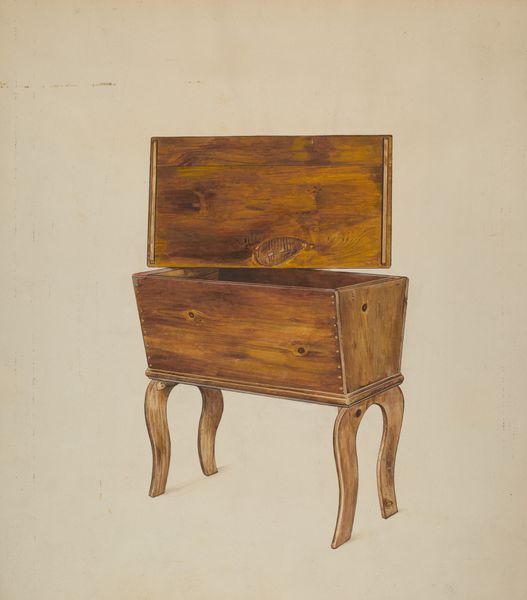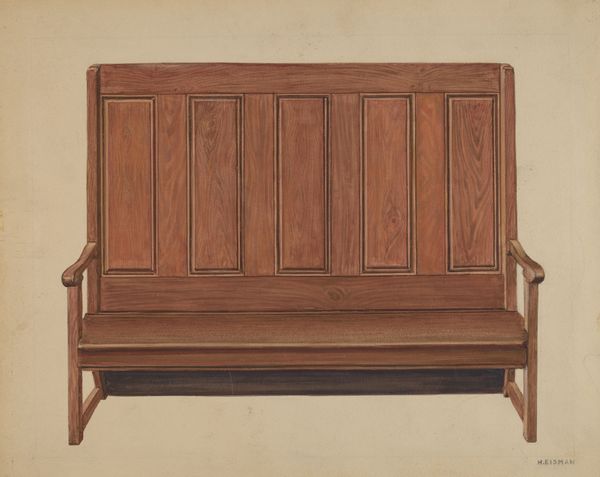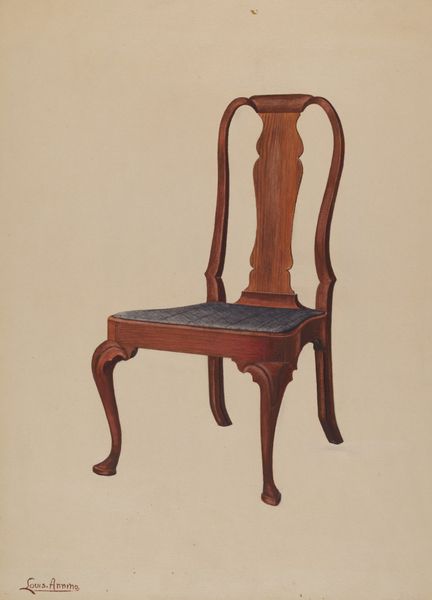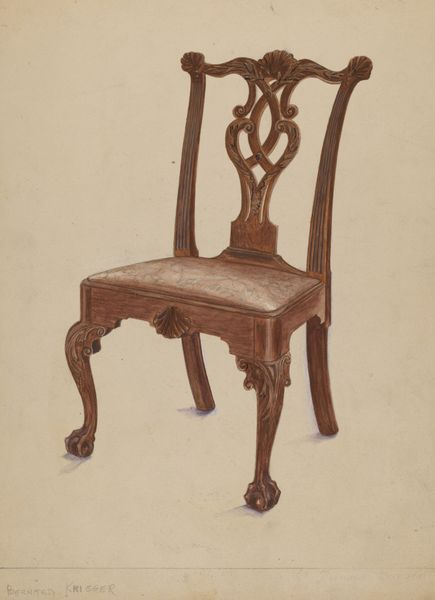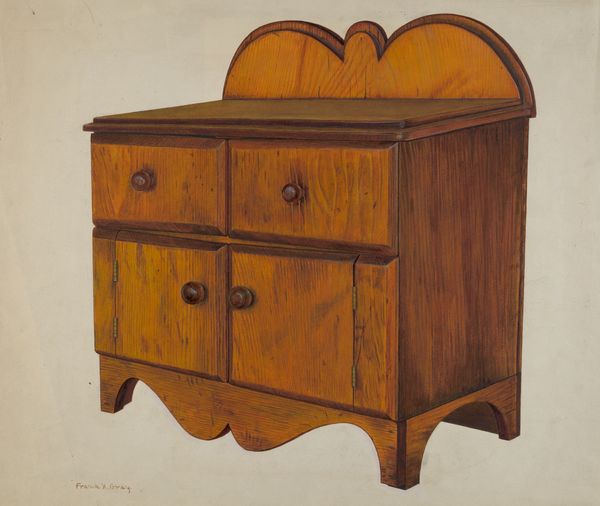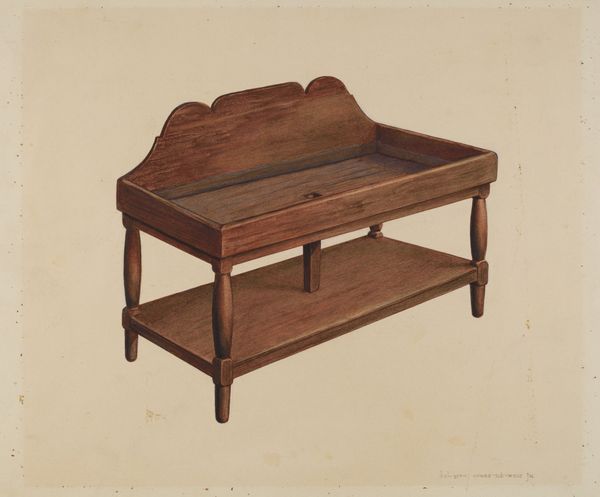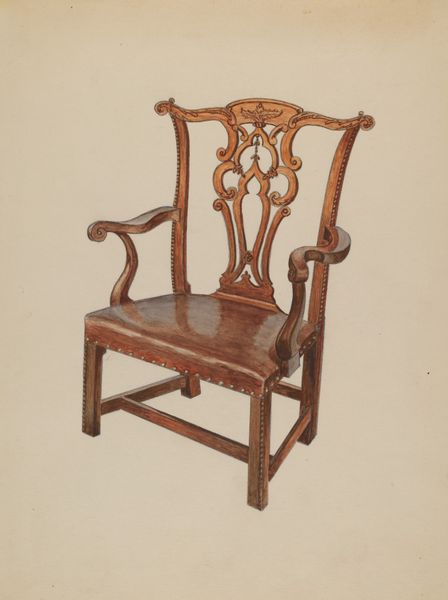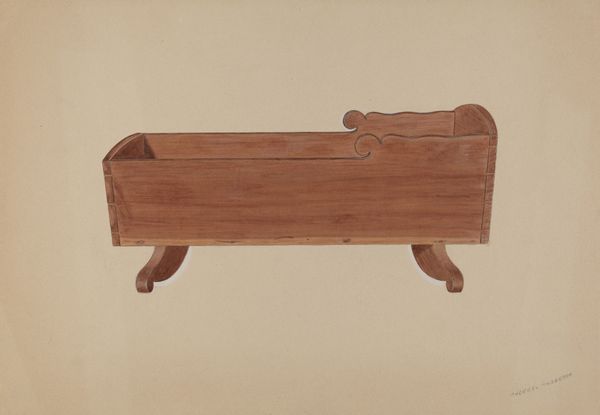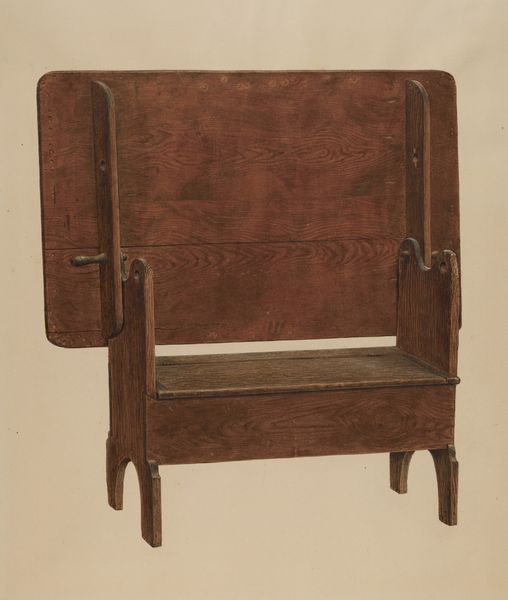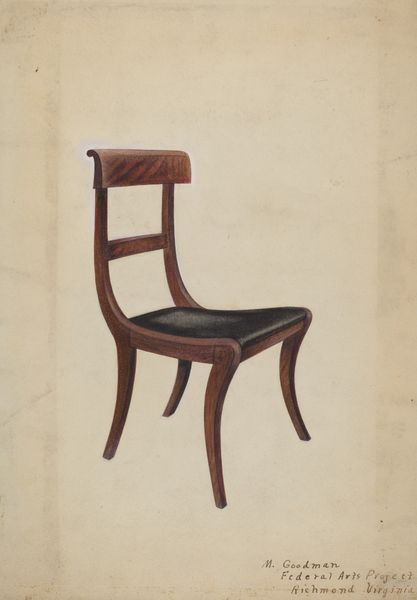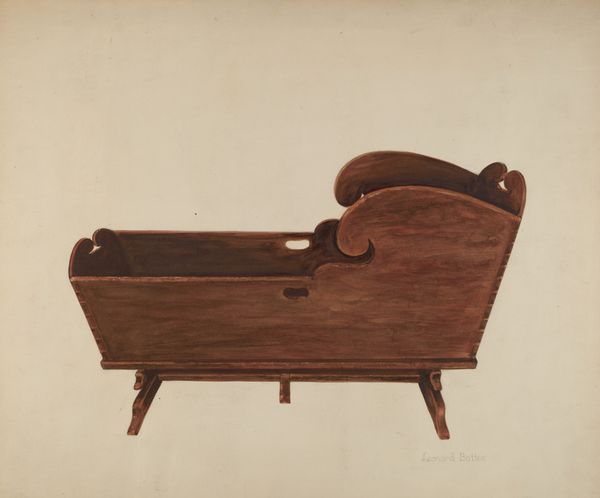
drawing, charcoal
#
drawing
#
furniture
#
charcoal drawing
#
charcoal
#
watercolor
Dimensions: overall: 23 x 28.6 cm (9 1/16 x 11 1/4 in.) Original IAD Object: 121 cm. long; 74 cm. high; 74.5 cm. deep
Copyright: National Gallery of Art: CC0 1.0
Curator: Arthur Johnson created this "Settle-table" around 1936 using charcoal and watercolor on paper. Editor: It's surprisingly cozy. There’s a stillness to it, a quiet sense of utilitarian charm that really grabs you. I’m drawn to the texture and subtle gradation achieved by what appears to be a charcoal and watercolor wash technique. Curator: Exactly. The material treatment is part of its charm. Johnson seemed less interested in artistic mastery and more focused on illustrating everyday objects; you could argue that drawings such as these helped the public visualize modern domestic ideals. Editor: Interesting. I'm looking at how light plays across the surfaces, the composition with the back-panel symmetry broken by the drop-leaf extensions. There’s something appealing about the clean geometry, which imbues it with functional beauty, if such a thing exists. The rendering of the wood grain is carefully rendered, as if a study, with meticulous strokes that celebrate the beauty of the material itself. Curator: In line with that thought, you're invited to consider this work as a tangible connection to labor history. Objects like settle-tables were symbols of stability but were usually available only to a wealthy demographic. These images allow people, like us, removed from its means of production to analyze how these furniture items reflect material desires. Editor: So the drawing, rendered with what seems to be charcoal and perhaps light washes of watercolor, becomes an investigation of form and light as it defines structure. It gives me the sense of a calm analysis through a medium. Its clarity allows the object’s essence to speak directly. The slight angle makes the image less cold and adds an emotive edge. Curator: I would suggest we view these elements together to interpret this illustration and to not detach the process from the final work. Understanding Johnson’s creative choices regarding this image opens avenues for analyzing material production within a capitalist market. Editor: I see your point. It’s a lovely demonstration, too, of how art can reflect, perhaps unwittingly, broader social dynamics, just through quiet formal exploration.
Comments
No comments
Be the first to comment and join the conversation on the ultimate creative platform.
